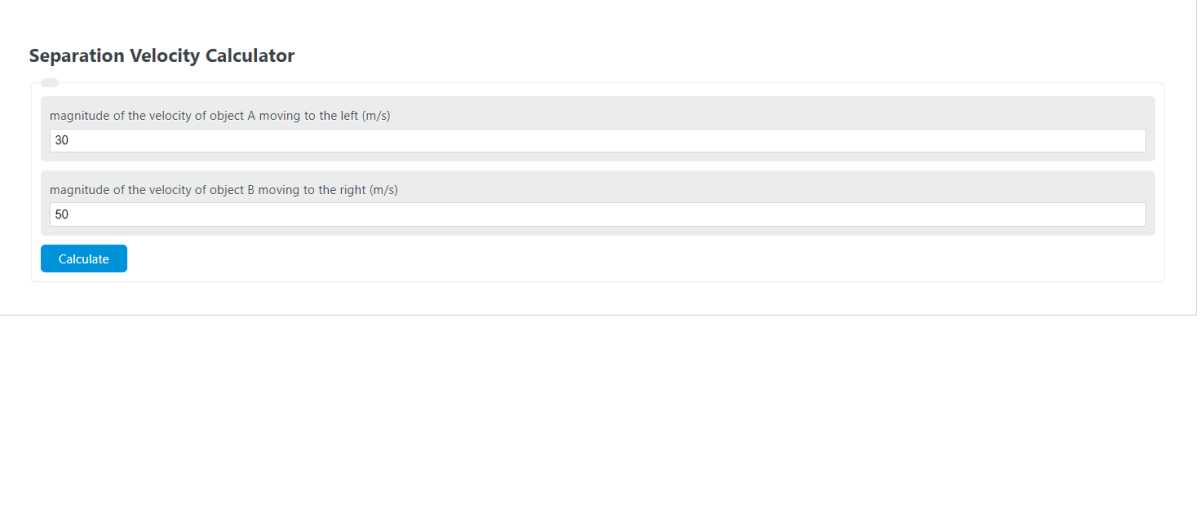Enter the velocity magnitude in both directions into the calculator to determine the separation velocity.
- All Velocity Calculators
- Relative Velocity Calculator
- Total Velocity Calculator
- Special Relativity Velocity Calculator
Separation Velocity Formula
The following equation is used to calculate the Separation Velocity.
Vs = VL + VR
- Where Vs is the separation velocity (m/s)
- VL is the magnitude of the velocity of object A moving to the left (m/s)
- VR is the magnitude of the velocity of object B moving to the right (m/s)
To calculate the separation velocity, sum the magnitude of the velocity of each object moving in their respective directions.
What is a Separation Velocity?
Definition:
A separation velocity is a measure of the rate of change of displacement between two objects moving away from each other.
How to Calculate Separation Velocity?
Example Problem:
The following example outlines the steps and information needed to calculate Separation Velocity.
First, determine the magnitude of the velocity of object A moving to the left. In this example, this is found to be 50 m/s.
Next, determine the the magnitude of the velocity of object B moving to the right . For this problem, this is 30 m/s.
Finally, calculate the Separation Velocity using the formula above:
Vs = VL + VR
Vs = 50 + 30
Vs = 80 m/s
FAQ
What is the significance of calculating separation velocity in physics?
Separation velocity is crucial in physics as it helps in understanding the dynamics of objects moving away from each other. It is especially important in scenarios involving collisions, space missions, and any system where understanding the relative motion of objects is necessary for predicting future positions or for safety calculations.
Can separation velocity be negative?
Separation velocity itself is a magnitude and is typically considered a positive value, representing the rate at which two objects are moving apart. However, the directional components (VL and VR) used to calculate it can be negative, depending on the chosen coordinate system and the direction of motion being considered as positive.
How does the concept of separation velocity apply to real-world scenarios?
In real-world scenarios, separation velocity can apply to a wide range of situations, such as vehicles moving in opposite directions on a highway, the takeoff of spacecraft from a planetary surface, or even the separation of astronomical objects in space. Understanding separation velocity allows engineers and scientists to make precise calculations for safety, fuel efficiency, and mission success in these contexts.
